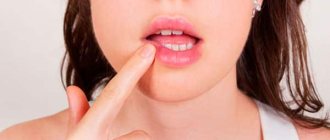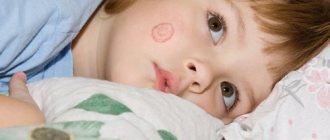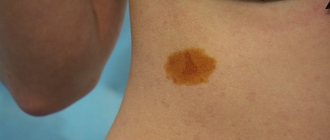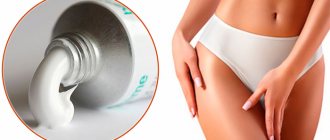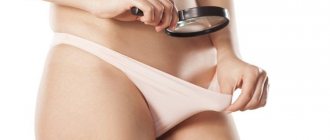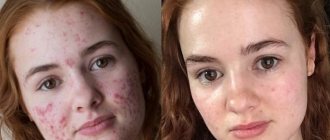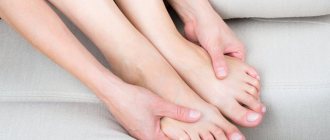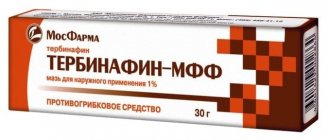Do these drugs help?
Each type of lichen is caused by a different viral or fungal pathogen, which is why they are grouped into groups, the main of which are:
- pink;
- shearer;
- encircling;
- tropical, light and dark;
- color;
- multi-colored;
- red, lichen planus.
All these diseases are united into one group by the fact that they do not cause serious changes in the body, they look like multi-colored spots on the skin, the main symptom is itching and redness of the infected area. The most common type of lichen is shingles. It manifests itself under the influence of the Varicella-Zoster virus, which is present in the body of all people who have had chickenpox.
It accumulates in tissues after serious stress, colds, nervous experiences, hunger strikes, etc. Damaged and exhausted immunity allows infection without any problems, which enters the skin cells through the bloodstream and causes an active inflammatory process, the person becomes contagious and can infect others with chickenpox . The first symptoms of such a disease will be general manifestations:
- high body temperature,
- headache,
- dizziness.
Itching appears in some areas of the face or torso; symptoms can also appear on the extremities, but quite rarely. Very often the rash is localized under the ribs. The rash consists of bubbles with transparent contents, usually found asymmetrically in one place. The disease is not very dangerous, but there is always a chance of infection of the eyeball with the Zoster virus, which can lead to various serious consequences and even blindness. That is why timely and comprehensive treatment of lichen is necessary.
Convenient for shingles
Shingles is a viral disease, a secondary form of chickenpox. The causative agent is the herpes virus, although it is a different type, but it is treated like a cold on the lips, with acyclovir. It is impossible to be cured completely, but acyclovir can stop the reproduction of this rubbish. The sooner you start taking acyclovir, the better. You should take the tablets and lubricate the affected areas with ointment every 4 hours. Be sure to take the tablets with a glass of water to avoid complications with the kidneys. It's more difficult with ointment. The fact is that ordinary acyclovir in the form of an ointment for 25 rubles, after application to the body, is not absorbed by the skin and runs off in drops.
Acyclovir Akrikhin after the same time after application to the skin looks like this:
But here I am ready to overpay. For those who buy to treat colds on the lips, the difference is not noticeable. For shingles, I had to use up 3 tubes of Akrikhin (but I had small areas of damage) plus one tube of regular acyclovir. Judging by the photos from the network, there are much more extensive areas of damage, the treatment of which will require at least a dozen of these tubes.
All together (with acyclovir tablets) my treatment cost 150 rubles. For comparison, Zovirax cream in pharmacies costs more than 350 rubles for 5 grams. I also used it - I found an expired one in my medicine cabinet. It absorbs even better (does not leave a greasy residue) than Akrikhin, but I’m not ready to overpay 10 times.
Although Akrikhin does not drip down, it still leaves a greasy mark on the skin, like hygienic lipstick. In comparison with ordinary acyclovir, Akrikhin’s composition is supplemented with propylene glycol, emulsion wax, petroleum jelly and its oil.
Nothing super effective, just basic components. But this is where convenience lies. When you are at home and alone, you can walk around the apartment naked, smeared with ordinary acyclovir (the main thing is not to lean against the furniture with smeared body parts). But when you don’t live alone, or you feel sleepy, you can use regular acyclovir to smear your clothes and bed. I applied regular acyclovir for half an hour or an hour, then wiped it off with paper napkins, put on an old T-shirt and went to bed. It became easier with Akrikhin - I applied it to the affected areas and immediately put on a T-shirt.
I didn’t have any itching as such, but I had and still have hypersensitivity in those parts of the body that are innervated by nerve endings affected by the virus: any impact on these areas of the skin causes painful irritation. First there was the flu with a sore throat, runny nose and cough. Then, already recovering, the right neck seemed to swell and unbearable sensitivity appeared on the skin in one place, where after 3-4 days the skin turned red and a rash with blisters appeared, at the same time these red spots began to appear along the back right half of the neck, shoulder blade and arm. The rashes are located strictly on one side of the body, which made it possible to make a diagnosis during examination even without tests.
I recommend Akrikhin acyclovir if you are faced with such an unpleasant disease. Shingles is activated mainly in old age, or with reduced immunity and stress. Be attentive to your health!
Review updates from 10/31/17. I see that the review is read periodically, so I’ll add it. To date, there are no traces left on the skin in the most severe areas of lichen. I was very afraid that the red spots would remain forever, but after 3 months it is possible to distinguish the locations of the rashes only after a thorough examination by a doctor. But my affected areas were small and I managed not to injure the blisters. Do not delay treatment: the sooner you start using acyclovir, the smaller the affected areas will be and the fewer marks will remain on the skin.
The most important thing is that the pain in the arm and neck disappeared without a trace. The last unpleasant sensations were in September. That is, after 2 months there were no signs of herpes zoster left. Although I was also afraid that these painful sensations would remain forever.
None of those who interacted with me became infected from me. I had the opportunity to quarantine myself by sending all my relatives to the dacha, but, of course, it was not possible to completely eliminate contacts. All the same, things forced me to spend at least 1-2 days a week for several hours in my “infirmary”. Fortunately, everything worked out fine. I strengthened my immune system throughout September with Echinacea tablets, Kagocel and kefir-yogurt. I was very worried that after shingles, the body would not be able to cope with a typical flu in conditions when everyone around was coughing and blowing their nose, and even on the eve of the start of the heating season, when it was cold in the apartment and dank outside. But, hurray!, I’m still doing great, although two colleagues had a bad runny nose. Don't forget to strengthen your immune system!
[youtube.player]
Lichen is a generalized concept that refers to several skin diseases of various etiologies. Their appearance can be provoked by viral and fungal infectious agents, and in some cases, internal systemic abnormalities. In each specific case, the most suitable treatment method is selected.
Incorrect diagnosis and self-medication with available medications is fraught with aggravation of the pathology, deterioration of the condition of the skin, and the disease becoming chronic. Therefore, the success of treatment of dermal diseases directly depends on the accuracy of diagnosis and the qualifications of the dermatologist. Acyclovir ointment for lichen helps to cope with skin lesions caused by viral etiology.
Before starting therapy, it is important to consult a dermatologist. Only a doctor can accurately determine the nature and type of the disease, select effective antiviral drugs, and draw up an individual strategy to combat the disease.
Fixed assets
Tablets for the treatment of lichen are quite common; Acyclovir tablets are the most effective. Acyclovir is an antifungal agent that works well against the Varicella-Zoster virus and all other lichen pathogens. This drug is almost always used in cases of deprivation of various etiologies and during primary infection. In severe cases of direct danger of eye infection, immunomodulatory therapy is used, since it allows the activation of specific immunity to lichen, which is very important in cases of severe infections.
Zostevir is used in such cases, as it perfectly stabilizes the immune system. Isolation of a patient with lichen is very important, as it is contagious and can be dangerous to others. The rash should be treated with antiseptic solutions such as brilliant green or methylene blue. Another type of lichen that is quite common is pityriasis rosea.
It develops as a result of a strong allergic reaction that continues in the body. As a result, pink spots appear on the face or body. The pink version of lichen is not at all contagious, as it develops as a result of allergies. People get pityriasis rosea quite often, and it is especially common in people who have an autoimmune disease, such as lupus, Hashimoto's disease, amyloidosis, rheumatism, or people whose relatives have had such processes.
Tablets that are prescribed for lichen in humans are drugs intended for symptomatic treatment, for example Zodak. There is also a pityriasis variant of lichen. It is caused by certain types of common fungal infections. The symptoms are based on dark spots on the shoulders or torso, the patient feels itching. This type of disease is transmitted only with low immunity and a decrease in skin pH; it can also develop with heavy sweating.
For treatment, regular tablets are usually used, for example Acyclovir, as it is effective in all cases of lichen infection. With this variant of lichen, general intoxication does not develop and the temperature does not rise. The disease progresses favorably, there may be a chronic variant, but even this is of little danger to the functioning of the body. But without treatment, the area that is infected with lichen will increase all the time.
Lichen planus is a rather interesting disease, since its exact cause has not been established; it is known that women get sick 25% more often than men, and there is an assumption that this is caused by disorders of the immune system or metabolic disorders. The rash with such lichen is usually red or dark burgundy in color, quite severe itching is often encountered, the rash develops over a long period of time, and can appear near the mouth and genitals in the form of nodules.
To treat this type of lichen, phototherapy (treatment with light) and treatment with various immune stimulants are used. The prognosis of the disease is not very favorable, but with proper treatment, complete recovery is possible.
User comments
Try applying Triderm ointment. It helped me. Periodically, he passed and appeared in different places.
Now TTT has been gone for a long time. God bless. Probably the immunity has increased.
Pityriasis rosea (Gibera) (lat. Pityriasis rosea) is an infectious-allergic skin disease characterized by spotty rashes. The average duration of the disease is from 4 to 6 weeks, in rare cases - up to six months. The infection is not transmitted. Only people with low immunity get sick with rosacea; The development of the disease is favored by a cold.
There is no specific treatment for pityriasis rosea. The disease usually goes away on its own. During the onset of secondary rashes, friction and pressure from the elements is not recommended to avoid the appearance of an irritated form of pityriasis rosea. For severe itching, antihistamines, topical low-strength corticosteroids (hydrocortisone) and prescription antipruritic mixtures are prescribed. There are studies showing that taking high doses of erythromycin, acyclovir and ultraviolet irradiation in the first days of the disease leads to a faster and uncomplicated course of the disease. Hypoallergenic diet; Antihistamines (to relieve itching); Externally: water-shaken suspensions (Tsindol); it is possible to use corticosteroid ointments; Limit cosmetics applied to the body; Do not use woolen or synthetic underwear.
Here is more information in more detail about what is possible and what is not.
This disease can go away on its own, and with treatment it can last up to two months.
The main task of treating pityriasis rosea is to prevent skin inflammation, infection with staphylococcus, streptococcus, and the addition of eczema.
For rosacea, it is very important to follow a hypoallergenic diet, exclude alcoholic beverages, coffee and tea, chocolate, citrus fruits, eggs, fruits with red skin and pulp, nuts, spices, and aromatics from the diet. You should not drink carbonated drinks, especially flavored ones and those with dyes, or eat confectionery products with cream and chocolate, smoked foods, or canned foods.
A patient with pityriasis rosea should not wash in the bath to avoid spreading the infection over the surface of the body. You can wash in the shower under running water. Do not wash the skin with soap or other detergents, or rub the skin with a washcloth.
The patient should not use cosmetics or perfumed body products for five weeks. It is highly undesirable to sunbathe, swim in open water, and you cannot visit solariums, massages, or swimming pools.
It is best to wear clothes made from cotton or linen fabrics, avoid synthetics and items made from natural wool.
The doctor prescribes antihistamines, immunostimulants, and vitamins for the treatment of pityriasis rosea. As an external lotion, you should use water-zinc mash, creams - corticosteroids. It is recommended to lubricate the skin on the affected areas with sea buckthorn oil, milk thistle oil, and rosehip oil.
If a skin infection is associated with the disease, the doctor will prescribe treatment with broad-spectrum antibiotics.
Relapses of the disease occur very rarely, only with a very significant decrease in the patient’s immunity and violation of personal hygiene rules during the illness.
The prognosis for pityriasis rosea is favorable; the disease, if treated in a timely manner, does not leave a person with complications that negatively affect health in the future.
If you notice the first symptoms of pityriasis rosea, you should immediately contact a dermatologist for advice and treatment, he will recommend how to properly treat pityriasis rosea. Incorrect and untimely treatment can lead to the disease leading to an infectious lesion of the skin or the development of persistent eczema. These are conditions that are much more difficult to treat.
[youtube.player]
Medicines for the treatment of ringworm
Ringworm is quite common and can be easily transmitted from animals and people. It is caused by a fungal infection. First, a red rash appears on areas of the head, after which the hair is destroyed and spots appear on which hair does not grow.
It is very common in dermatological practice, children are especially often ill, as they come into contact with animals; for diagnosis and proper treatment, consultation with a dermatologist is necessary, although Acyclovir is used in all cases. They use various ointments and other methods of applying medications to the spots.
With ringworm, it is urgent to isolate the patient from society, as it is very contagious. Usually isolated at home. For all types of diseases, timely consultation with a doctor is very important, since only he can help and prescribe the correct treatment. Self-medication can be harmful to your health.
Reviews
If you believe the reviews, Acyclovir tablets and ointment really help cope with the infection of pink and herpes zoster.
After a long business trip, my husband discovered several long (10-15 cm) stripes with a rash. I was terribly offended by him, because... I thought I had brought home some kind of sexually transmitted disease. It turned out that it was shingles. She was treated with Acyclovir ointment and immunostimulants. Medicines and dosages were prescribed by the doctor. The rash went away on the 6th day. The blisters simply dried out from the inside, and the skin on top became covered with a “scab” and peeled off.
To be honest, scientists have not precisely established the nature of pityriasis rosea, and therefore the ointment helps with varying degrees of success. If you take it in parallel with pills, you can really get rid of it in 10 days. But intravenous injections are evil, you will pick up such “side effects” that your mother will not worry.
Although the ointment is not recommended for the treatment of lichen in children, I took a risk when my 4-year-old daughter brought this “happiness” home after 2 days of playing with yard cats. A small inflammation itched (it’s good that I noticed it in time). They anointed her with Acyclovir (5%) and put a bandage on top so that my daughter wouldn’t scratch her. On the 3rd day there was no trace of the rash left. The skin is smooth and healthy. I think such dosages are not dangerous even for children.
Herpes zoster is a viral disease that is accompanied by a blistering rash in the projection of nerve fibers. Skin changes become the main part of the clinical picture; they can appear on almost any part of the body: chest, face and neck, back, limbs. This brings a lot of trouble - itching, burning, pain. To relieve symptoms, it is important to start specific therapy on time. And the most common treatment for herpes zoster is with drugs containing acyclovir.
Acyclovir-AKOS tablets 200 mg
for one tablet:
Active ingredient: acyclovir – 200 mg;
Excipients: magnesium stearate, talc, colloidal silicon dioxide (Aerosil), crospovidone, sodium starch glycolate, potato starch.
Acyclovir is a synthetic purine nucleoside analogue that has the ability to inhibit in vitro and in vivo human herpes viruses, including herpes simplex virus (HSV) types 1 and 2, varicella zoster virus and herpes zoster virus (varicella-zoster virus, Varicella zoster virus (ZV)), Epstein-Barr virus (EBV) and cytomegalovirus (CMV). In cell culture, acyclovir has the most pronounced antiviral activity against HSV-1, followed in descending order of activity by: HSV-2, VZV, EBV and CMV.
The inhibitory effect of acyclovir on herpes viruses (HSV-1, HSV-2, VZV, EBV, CMV) is highly selective. Acyclovir is not a substrate for the thymidine kinase enzyme in uninfected cells, therefore acyclovir is of low toxicity to mammalian cells. Thymidine kinase of cells infected with HSV, VZV, EBV and CMV viruses converts acyclovir into acyclovir monophosphate, a nucleoside analogue, which is then sequentially converted into diphosphate and triphosphate under the action of cellular enzymes. The incorporation of acyclovir triphosphate into the viral DNA chain and subsequent chain termination blocks further replication of the viral DNA.
In patients with severe immunodeficiency, long-term or repeated courses of acyclovir therapy may lead to the emergence of resistant strains, so further treatment with acyclovir may be ineffective. The majority of isolated strains with reduced sensitivity to acyclovir had a relatively low content of viral thymidine kinase and a disorder in the structure of the viral thymidine kinase or DNA polymerase. In vitro exposure of herpes simplex virus (HSV) strains to acyclovir may also result in the formation of strains that are less sensitive to it. A correlation has not been established between the sensitivity of herpes simplex virus (HSV) strains to acyclovir in vitro and the clinical effectiveness of the drug.
Acyclovir is only partially absorbed from the intestine. After administration of 200 mg of acyclovir every 4 hours, the mean maximum steady-state plasma concentration (CSSmax) was 3.1 μM (0.7 μg/ml), and the mean steady-state minimum plasma concentration (CSSmin) was 1.8 μM (0.4 µg/ml). When taking 400 mg and 800 mg of acyclovir every 4 hours, CSSmax was 5.3 μM (1.2 μg/ml) and 8 μM (1.8 μg/ml), respectively, and CSSmin was 2.7 μM (0.6 μg/ml). ml) and 4 µM (0.9 µg/ml), respectively.
The concentration of acyclovir in the cerebrospinal fluid is approximately 50% of its concentration in blood plasma.
Acyclovir binds to blood plasma proteins to an insignificant extent (9-33%), so drug interactions due to displacement from binding sites with blood plasma proteins are unlikely.
Special patient groups
In patients with chronic renal failure, the half-life of acyclovir averaged 19.5 hours. During hemodialysis, the average half-life of acyclovir was 5.7 hours. The plasma concentration of acyclovir decreased by approximately 60% during dialysis.
In elderly patients, the clearance of acyclovir decreases with age in parallel with a decrease in creatinine clearance, but the half-life of acyclovir changes slightly.
When acyclovir and zidovudine were administered simultaneously to HIV-infected patients, the pharmacokinetic characteristics of both drugs remained virtually unchanged.
— Treatment of infections of the skin and mucous membranes caused by the herpes simplex virus, including primary and recurrent genital herpes.
— Prevention of recurrence of infections caused by the herpes simplex virus in patients with normal immune status.
— Prevention of infections caused by the herpes simplex virus in patients with immunodeficiency.
- Treatment of chickenpox and herpes zoster (early treatment of herpes zoster with acyclovir has an analgesic effect and can reduce the incidence of postherpetic neuralgia).
Pregnancy, breastfeeding, old age, renal failure, dehydration, simultaneous use with other nephrotoxic drugs.
- Hypersensitivity to acyclovir or valacyclovir or any other component of the drug.
— Children under 3 years of age.
Fertility There is no data on the effect of acyclovir on female fertility. A study of 20 male patients with normal sperm counts found that oral acyclovir up to 1 g per day for 6 months had no clinically significant effect on sperm count, motility or morphology. Pregnancy The post-registration registry of pregnancies during treatment with acyclovir collected data on pregnancy outcomes in women taking acyclovir in different dosage forms. In an analysis of registry data, there was no increase in the number of birth defects in infants whose mothers took acyclovir during pregnancy compared with the general population. The identified birth defects were not uniform or consistent, suggesting a common cause. However, caution should be exercised when prescribing Acyclovir-AKOS to women during pregnancy and assess the expected benefit to the mother and the possible risk to the fetus. Breastfeeding period After taking the drug Acyclovir-AKOS orally at a dose of 200 mg 5 times a day, acyclovir is detected in breast milk in a concentration ranging from 60 to 410% of plasma concentration. At these concentrations in breast milk, breastfed infants can receive acyclovir at a dose of 0.3 mg/kg/day. Given this, caution should be exercised when prescribing the drug to nursing women.
The drug Acyclovir-AKOS, tablets, can be used with meals, since food intake does not significantly interfere with its absorption. The tablets should be taken with a full glass of water.
Use in adults
Treatment of infections caused by herpes simplex virus
For the treatment of infections caused by the herpes simplex virus, the recommended dose of the drug is 200 mg 5 times a day (every 4 hours, except during night sleep). The course of treatment is 5 days, but can be extended for severe primary infections.
In case of severe immunodeficiency (for example, after bone marrow transplantation) or in case of impaired absorption from the intestine, the dose of the drug can be increased to 400 mg. As an alternative, the possibility of using acyclovir in dosage form - a lyophilisate for the preparation of a solution for infusion - may be considered.
Treatment should begin as soon as possible after infection occurs; in case of relapses, it is recommended to prescribe the drug already in the prodromal period or when the first elements of the rash appear.
Prevention of recurrent infections caused by the herpes simplex virus in patients with normal immune status
To prevent relapses of infections caused by the herpes simplex virus in patients with normal immune status, the recommended dose of the drug is 200 mg 4 times a day (every 6 hours). For many patients, a more convenient therapy regimen of 400 mg 2 times a day (every 12 hours) is suitable.
In some cases, lower doses of the drug are effective - 200 mg 3 times a day (every 8 hours) or 200 mg 2 times a day (every 12 hours).
Some patients may experience exacerbation of infection when taking a total daily dose of 800 mg.
Treatment with the drug should be periodically interrupted for 6-12 months to identify possible changes in the course of the disease.
Prevention of infections caused by herpes simplex virus in patients with immunodeficiency
For the prevention of infections caused by the herpes simplex virus in patients with immunodeficiency, the recommended dose of the drug is 200 mg 4 times a day (every 6 hours).
In case of severe immunodeficiency (for example, after bone marrow transplantation) or in case of impaired absorption from the intestine, the dose of the drug can be increased to 400 mg. As an alternative, the possibility of using acyclovir in dosage form - a lyophilisate for the preparation of a solution for infusion - may be considered. The duration of the preventive course of therapy is determined by the length of the period when there is a risk of infection.
Treatment of chickenpox and herpes zoster
For the treatment of chickenpox and herpes zoster, the recommended dose of the drug is 800 mg 5 times a day (every 4 hours, except during night sleep). The course of treatment is 7 days.
In patients with severe immunodeficiency (for example, after bone marrow transplantation) or in cases of impaired absorption from the intestine, it is necessary to consider the possibility of prescribing acyclovir in dosage form - a lyophilisate for the preparation of a solution for infusion.
The drug should be prescribed as soon as possible after the onset of infection, since in this case the treatment is more effective.
Special patient groups
Children aged 3 years and older
Treatment of infections caused by the herpes simplex virus; prevention of infections caused by the herpes simplex virus in patients with immunodeficiency
– aged 3 years and older – the same doses as for adults.
Treatment of chickenpox
– aged 6 years and older – 800 mg 4 times a day;
– aged 3 to 6 years – 400 mg 4 times a day.
More precisely, the dose can be determined at the rate of 20 mg/kg body weight (but not more than 800 mg) 4 times a day. The course of treatment is 5 days.
Prevention of recurrence of infections caused by the herpes simplex virus in patients with normal immune status: treatment of herpes zoster
There are no data on dosage regimen.
Elderly patients
It is necessary to ensure that adequate water balance is maintained.
Patients with impaired renal function
Caution must be exercised when prescribing the drug to patients with impaired renal function.
It is necessary to ensure that adequate water balance is maintained.
In patients with renal failure, oral administration of acyclovir at recommended doses for the treatment and prevention of infections caused by the herpes simplex virus does not lead to accumulation of the drug to concentrations exceeding established safe levels. However, in patients with creatinine clearance less than 10 ml/min, it is recommended to reduce the dose of the drug to 200 mg 2 times a day (every 12 hours).
When treating chickenpox and herpes zoster, the recommended doses of the drug are:
– with creatinine clearance less than 10 ml/min – 800 mg 2 times a day (every 12 hours);
– with creatinine clearance 10-25 ml/min – 800 mg 3 times a day (every 8 hours).
The frequency categories of adverse reactions listed below are estimates. For most adverse reactions, the necessary data to determine the frequency of occurrence are not available. In addition, the incidence of adverse reactions may vary depending on the indication.
The adverse reactions presented below are listed according to their frequency of occurrence, defined as follows: very common (>1/10), common (>1/100 and 1/1000 and 1/10,000 and
Characteristics in the rating
| 1 | Exoderil | Effectively fights pityriasis versicolor |
| 2 | Panavir | Good immunomodulator |
| 3 | Nizoral | Excellent for removing rough epithelium on the scalp |
| 4 | Keto-Plus | Quickly eliminates excess flaking on the scalp |
| 5 | Mycoseptin | The best ratio of price and quality. Has a bacteriostatic effect |
| 6 | Clotrimazole | Fast healing rate |
| 7 | Fluorocort | Effectively eliminates tissue swelling |
| 8 | Mycozoral | Active against staphylococcus and streptococcus |
| 9 | Sulfur-tar ointment | Time-tested effectiveness |
| 10 | Acyclovir | Best price. Effective for herpes zoster |
The human skin is regularly exposed to external factors that provoke the appearance of defects: viruses, bacteria, thermal and chemical burns, mechanical damage. Internal changes in the body are dangerous; they affect the condition of the skin: weakened immunity, digestive problems, metabolic disorders. Ringworm is one of the manifestations of such influence. The term is a general term for several skin diseases that have similar symptoms and origins.
There are 7 types of lichen: pink, ringworm, tinea, cauliflower, red, scaly and asbestos. All are united by the presence of a rash on the human body, and the cause of its occurrence is different. The most dangerous and requiring immediate treatment are those caused by viruses. They spread quickly and take a long time to heal. Complete cleansing of the skin in advanced cases is impossible. The reason for this reaction is considered to be a weakened immune system. Treatment is aimed at strengthening the body's defenses, relieving unpleasant symptoms, and eliminating the irritant. It is carried out under the supervision of a doctor, with the selection of medication and an individual regimen. Below are effective and popular medications.
Release forms of Acyclovir
The drug is produced in 4 main forms for different methods of use:
- Eye ointment 3%. Available in tubes of 3, 5 and 10 g. It contains petroleum jelly along with Acyclovir. Easily absorbed into the corneal epithelium and tissue in the eye area and provides a local antiherpetic effect.
- Ointment (cream) for use on skin and mucous surfaces 5%. Distributed in tubes of 2, 5, 10 and 20 g. The drug contains additional substances for better absorption through the skin.
- Tablets 200 and 400 mg. Pack of 20 pieces for oral use. Some companies also produce tablets containing 800 mg of the drug.
- Powder for dissolution in 0.9% sodium chloride and injection of 250, 500 and 1000 mg. The most digestible form of the drug, which has the maximum contraindications.
Worth noting. There are no eye drops containing Acyclovir. In ophthalmology, only 3% ointment is used.
Contraindications
Acyclovir is well tolerated by the majority of patients. The main contraindication to the use of the drug is the patient's intolerance to the main active substance Acyclovir. In case of impaired renal function and in elderly patients, therapeutic doses are reduced. Therapy with the drug during pregnancy and breastfeeding has not been sufficiently studied, therefore during this period it is necessary to use the drug with extreme caution as prescribed and under the strict supervision of a specialist.
Restrictions
Before applying shingles cream or taking pills, you should familiarize yourself with the restrictions on the use of drugs. Of course, taking into account contraindications and drug interactions is the doctor’s task, which he performs during a physical examination of the patient.
Contraindications
Of the absolute contraindications, the instructions indicate the only condition - individual intolerance to acyclovir. During pregnancy and breastfeeding, the use of tablets and local forms is limited, since the evidence base on the safety of the drug is still insufficient. Acyclovir is approved for use in children.
Interactions
When taking tablets, it is worth remembering that the half-life and clearance of acyclovir may decrease under the influence of probenecid. And the simultaneous administration of nephrotoxic drugs increases the risk of damage to the renal parenchyma. For local forms - ointment or cream - drug interactions are not described.
Each drug requires careful use. It is necessary to follow the recommendations of the attending physician in everything.
Medicines containing acyclovir are good for herpes zoster. They have an antiviral effect and help stop the exacerbation of infection. But it is strictly not recommended to use the drugs yourself.
Source of the article: https://orderofdagon.ru/aciklovir-pomog-opojasyvajushhij-lishaj/
Distribution in the body
When applied to the skin and mucous membranes, shingles cream or ointment has low systemic absorption. Only 9% of the total daily dose is excreted in the urine. From tablets, acyclovir penetrates well into all tissues of the body, but its bioavailability does not exceed 30%. Peak plasma concentration is achieved 90–120 minutes after administration. The drug is metabolized in the liver, and excretion mainly occurs through the kidneys.
Characteristics
Acyclovir is the pharmacological name of a rather chemically complex molecule. In terms of its structure, it is a synthetic analogue of deoxyribonucleoside, a purine base that is part of cellular DNA. As a medicine, it comes in several forms that may be needed for herpes zoster: tablets, cream and eye ointment.
In addition to the active substance, the preparations also contain other components that have auxiliary value. Tablets, for example, contain starch, lactose monohydrate, magnesium stearate, sucrose, polyvinylpyrrolidone. The cream contains paraffin, microcrystalline cellulose, methylparaben, cytostearyl alcohol, and water. And eye ointment with acyclovir has only one additional ingredient - soft paraffin.
Properties
The therapeutic effect of drugs is mediated by the properties of the active ingredient. Acyclovir has an antiviral effect in lichen. Due to the similarity of the molecule to the DNA of the pathogen, the drug binds specific proteins of the microbe, thereby blocking its reproduction.
Transforming under the influence of thymidine kinase into the active form - acyclovir triphosphate - the drug exhibits high affinity for the viral polymerase, selectively inhibiting its activity. This inhibits the replication process. But there is another mechanism: the substance is integrated into the nucleotide chain itself, which makes the reproduction of viral DNA impossible.
The use of acyclovir reduces the symptoms of the disease, accelerates the formation of crusts and prevents the formation of new elements. However, the drug is not capable of removing the virus from the nerve ganglia, where it remains latent for a long time. Therefore, we are talking only about eliminating the aggravation. In addition, acyclovir is able to enhance the body's protective properties, helping the immune system cope with viral activity.
Acyclovir is an antiviral drug that suppresses the reproduction of the herpes zoster pathogen.
Indications for use
Taking Acyclovir is prescribed for herpes zoster, for the treatment of pityriasis rosea and chickenpox. Therapy with the drug is indicated for infections caused by the herpes simplex virus. Such diseases include:
- herpetic eczema;
- gingivostomatitis caused by a viral infection;
- vesicular form of herpetic dermatitis;
- herpetic lesions of the anogenital area;
- herpetic eye infection;
- pharyngotonsillitis.
Return to contents
Possible side effects
With prolonged use of ointment for eye treatment, an inflammatory process in the form of blepharitis or conjunctivitis may develop. Therapy with tablets and injections must be carried out in dosages strictly prescribed by the doctor to avoid the occurrence of renal dysfunction. Rarely, treatment with Acyclovir is accompanied by the development of adverse reactions:
- shortness of breath;
- pain in the epigastric region;
- nausea;
- allergic rashes;
- headache;
- intestinal disorders.
Return to contents
